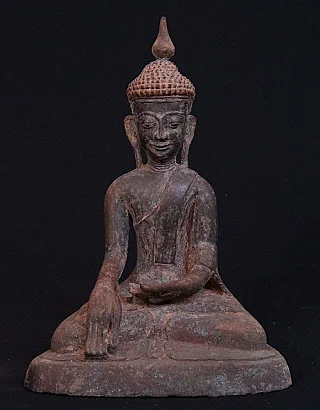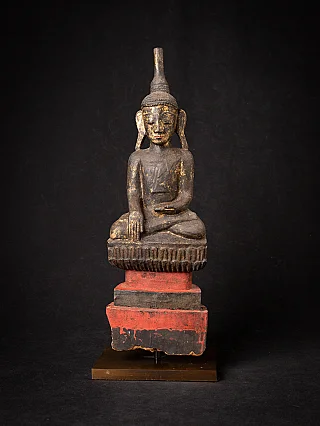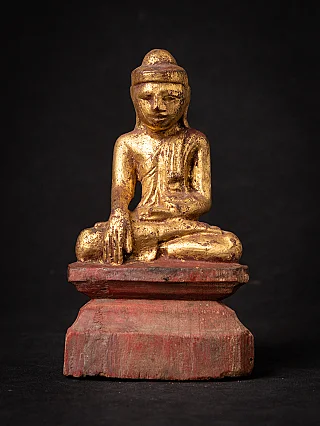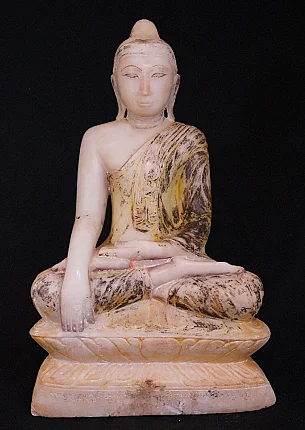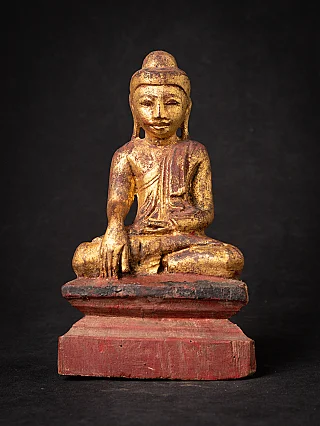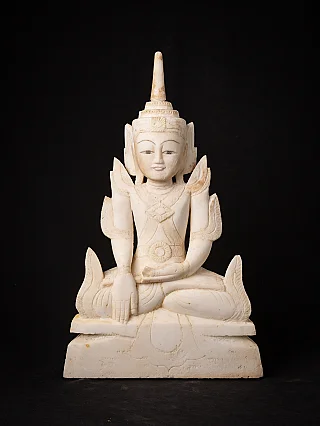Buddhist Mantra
Author : Peter Vredeveld

A mantra is a sacred utterance of a syllable, word, or verse considered mystical and spiritual efficacy. These words or syllables are generally used in Hinduism and Buddhism. They are either spoken aloud or merely spoken internally in one's inner thoughts by continuously repeating them or sounding just once. Generally, most of these Mantras do not have any apparent verbal meaning but are believed to have an unfathomable underlying significance that eventually are distillations of spiritual wisdom. The continuous repetition of a particular Mantra can instigate a trance-like state of mind in the practitioner, leading them to a different level of spiritual awareness. Similarly, different mantras bring out other psychic or spiritual purposes. In Hinduism, the sacred syllable Om is one of the most powerful and widely used mantras, while the Buddhist mantra of Om Mani Padme Hum is the principal mantra in Buddhism.
Very beautiful statues in our catalog
Buddhist Mantras or Buddha Mantra are the syllables and words chanted repetitively while practicing centering and consciousness shifting. The function of each Buddha Mantra can vary, but most of them have the goal of helping an individual inspire and invoke Enlightenment within them. Chanting a mantra can help the practitioner with specific life concerns while offering a way to focus during meditation. Some mantras can call out helpful guides and energies to assist the chanters on their path. Also, Buddha Mantras are believed to be the ways of learning and showing devotion to the teachings of Buddha. Buddhists in the Eastern world chant Buddha Mantras around Buddhist arts like Buddha statues, Buddha images, etc to keep them motivated and inspired while practicing meditation as these mantras are believed to be another way of focusing the mind. Mahayana Buddhists are known to speak mantras while they are using prayer beads, known as malas. These Malas help them count the number of times they have repeated the Buddha Mantra.
What are the contents of Buddha Mantras?
The Buddha's teachings, such as the Three Refuges or the Five Precepts, are frequently found in Buddha Mantra. Buddhists aim to imitate the Buddha's attributes by chanting the Buddha's teachings as Buddha mantras, which brings them closer to enlightenment. By repeating the mantras many times, Buddhists often learn them by heart. They memorise these mantras and then teach them to other people verbally in Buddhist cultures. Buddhists show their devotion to the Buddha by giving offerings and bowing in addition to reciting Buddha Mantras.
Examples of Buddhist Mantras
Among several Buddha Mantras, here are three examples for one to try:
1. Shakyamuni Mantra

Shakyamuni Mantra is an homage to Shakyamuni Buddha, also known as Siddhartha Gautama or the historical Buddha. The main goal of this mantra is to bring forth the exact Buddha nature that resides within us. Om Muni Muni Mahamuni Shakyamuniye Svaha Om: In invoking the sound of the Universe and Buddha nature Muni Muni: And the wise one, wise one Mahamuni Shakyamuniye: Of the Shakyans Svaha: Hail to thee!
2. The Avalokitesvara Mantra

This mantra is one of the most famous Buddha mantras worldwide. Tibetan Buddhists chant this mantra as a prayer to invoke Chenrezig, or "compassion personified," blessings, power, and loving attention. The emphasis of this mantra is on both offering and receiving compassion. Om Mani Padme Hum, Om: I invoke the sound of the universe Mani: the jewel, which is the goal of love, compassion, and Enlightenment Padme: Wisdom of Lotus Hum: Pure indivisible unity of wisdom.
3. The Amitabha Mantra

The Amitabha Mantra is dedicated to the Amitabha Buddha. This mantra means "To overcome all the hindrances and obstacles. This Buddha mantra is believed to protect the chanter from harm while helping them overcome different obstacles standing in the way of Enlightenment. Om Ami Dewa Hrih Om: I invoke the universal sound Ami: limitless light Dewa: Buddha nature Hrih: With self-respect.
Buddha Mantra with Buddhist arts
Buddhists worldwide chant Buddha mantras to inspire and motivate themselves to be on the path of Enlightenment. They do so by chanting the mantras while meditating alongside several Buddhist arts. Chanting the Buddha mantras in the presence of Buddhist images, artifacts, and statues may help bring many positive changes in the lives of the practitioner, as doing so may make them feel closer to the Buddha himself.
Share this page


















